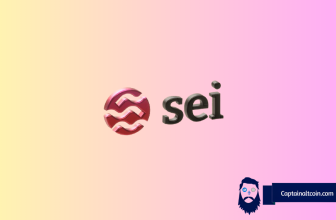
Stablecoins have been dominating the crypto headlines over the past year or two. On the face of it, they sound like the perfect digital commodity. All the benefits of crypto in term of security, transaction speed, privacy and so on, but without the death-defying – or sometimes not – leaps and falls in value that cause the risk averse to look away in horror.
The success and popularity of Tether – of which, more in a moment – has inspired dozens of other stablecoins of various types. Here, we take a look at the different variations, and which are showing the most promise for a stable crypto future.
What you'll learn 👉
All stablecoins are not the same
Stablecoins come in four types. These are fiat-backed, commodity backed, crypto-collateralized and algorithmic. Each has the same shared goal of fixing the value of the coin firmly against some stable asset.
There are about 200 stablecoins out there right now, but the risks are the same as you will find with any ICO. Some might have an amazing future, most will not. Remember Libra? Facebook’s very own stablecoin never really got off the ground in 2019, was rebranded in 2020 and was quietly wound down in 2022.
Here, we will avoid the likes of Libra and will focus on the stablecoins that have thrived in 2023.
USDT (Tether) is the Bitcoin of stablecoins
Tether USD (USDT) is the market leader in stablecoins, and has become somewhat synonymous with stablecoins as a whole, just like Bitcoin became synonymous with cryptocurrency. Its value is pegged 1:1 to the US dollar, which means that for every USDT that exists, there is one US dollar held in Tether Limited’s reserve.
Unlike “conventional” cryptocurrencies, USDT is not mined and is not decentralized. Instead, it is centralized and USDT tokens are added or removed from circulation to balance supply with demand. The buying and selling of USDT against other cryptocurrencies, however, does not affect the circulation.
Stability, recognition and a high market cap have led to Tether becoming something of a golden child. It is the stablecoin of choice among investors and also with consumers. USDT transactions are now possible through payment gateways like UniPayment.
Tether has boosted public confidence by deciding to publish a quarterly financial attestation of the assets it holds in its reserves.
USDC (USD Coin) sets out to make crypto simple
Like USDT, USD Coin (USDC) is fully backed by US dollar assets. It is connected with the the US government, but is held in segregated accounts within various US government regulated financial institutions. These segregated accounts are audited by independent assurance firm Grant Thornton, which provides monthly attestation reports similar to the USDT ones.
USDC was developed to provide businesses and individuals with an easy mechanism to transfer funds worldwide. It is the second largest stablecoin by market capitalization, after USDT and has a circulating supply of more than 42 billion coins.
DAI is the largest crypto-collateralized stablecoin
DAI is an Ethereum-based stable-price cryptocurrency developed, issued and managed by a decentralized autonomous organization known as MakerDAO. It has been around for five years now, so has had time to get established.
Users create DAI when they deposit other Ethereum-based digital assets into the Maker Protocol. These assets are then used as collateral to maintain DAI’s 1:1 ratio to the US dollar.
The decentralized, multi-collateral coin is well established and feels more like the concept Satoru Nakamoto dreamed of 15 years ago. It is subject to some price fluctuation volatility due to being crypto collateralized instead of fiat-pegged, but that is not necessarily a bad thing. The main point is that the extreme volatility is managed.
Others worth watching
The above three are our star stablecoins for 2023. Others worth watching over the coming months and into 2024 include Paxos Standard, Binance USD, Gemini Dollar, Stasis Euro and Tether Gold.








